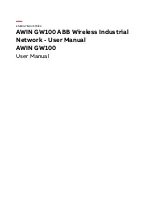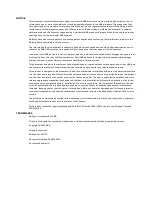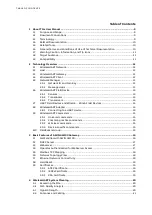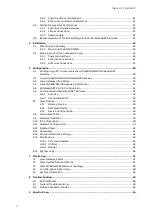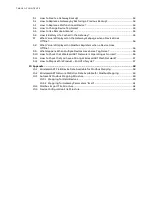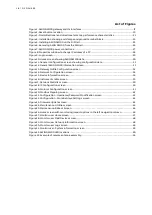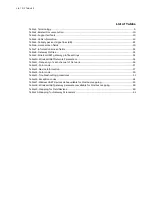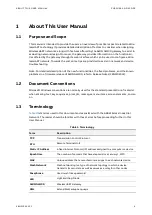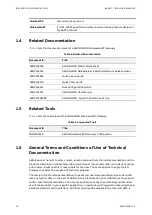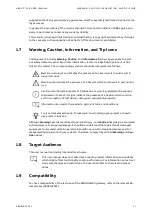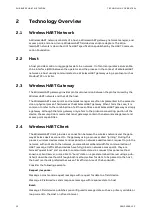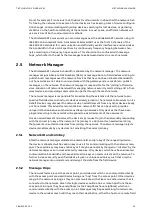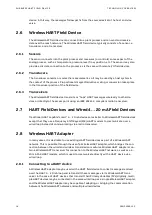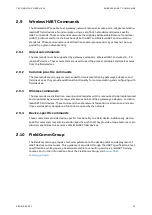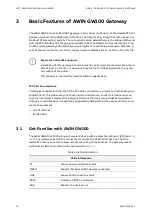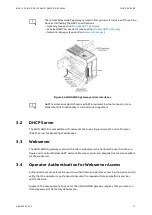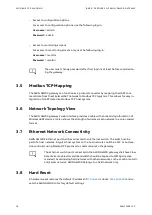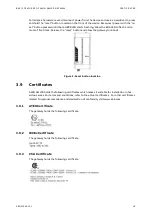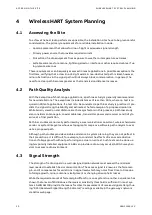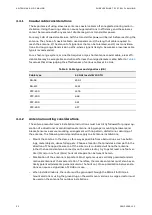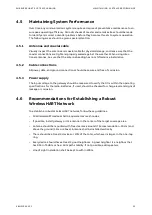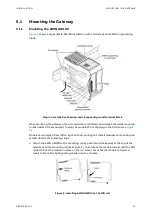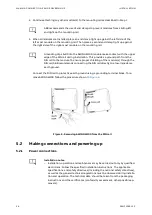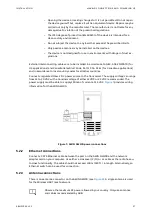
WIRELES SHART NETWOR K
TECHNOLOGY OVERV IEW
12
3BNP1029 12 C
2
Technology Overview
2.1
WirelessHART Network
A WirelessHART network consists of a host; a WirelessHART gateway, network manager, and
access point; and one or more WirelessHART field devices and/or adapters. The Wire-
lessHART network is described in the HART specifications published by the HART Communi-
cation Foundation.
2.2
Host
A host provides control or aggregates data in a network. It often incorporates a Human Ma-
chine Interface (HMI) between the operator and the process. In the context of WirelessHART
networks, a host usually communicates to a WirelessHART gateway using a protocol such as
ModbusTCP or similar.
2.3
WirelessHART Gateway
The WirelessHART gateway provides protocol conversion between the protocol used by the
WirelessHART network and that of the host.
The WirelessHART access point and network manager are often implemented in the same de-
vice or physical piece of hardware as the WirelessHART gateway. When this is the case, it is
common to refer to the combination of all three entities as a WirelessHART gateway or simply
a gateway. Although the term gateway only refers to the protocol-converting portion of the
device, the assumption is made that most gateways contain the network management and
access point capabilities.
2.4
WirelessHART Client
The WirelessHART client provides a connection between the wireless network and the gate-
way. Wireless devices connect to the gateway using a process called “joining.” During this
process, wireless devices detect and respond to a network advertisement, request to join the
network, authenticate to the network, and are allocated bandwidth for communication of
HART message traffic. When devices have fully joined a network access point, they are
termed “operational” and are able to communicate data via a request/response method
known as client/server; or are able to “burst” data on a pre-determined interval using a pub-
lisher/subscriber method. Although both methods allow for data to be passed to the host,
the burst method is preferred because of its efficient use of the bandwidth.
Consider the following example:
Request/response:
Message 1: Host sends request message with request for data to a field device.
Message 2: Field device sends response message with response data to host.
Burst:
Message 1: Field device publishes pre-configured message data such as a primary variable or
loop current to the Host on a fixed interval.
Summary of Contents for AWIN GW100
Page 1: ... ENERGY INDUSTRIES ABB Wireless Industrial Network AWIN GW100 User Manual ...
Page 2: ......
Page 8: ......
Page 10: ......
Page 12: ......
Page 68: ... Visit us www abb com oilandgas Document Number 3BNP102912 Rev C ...


